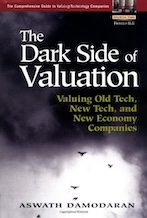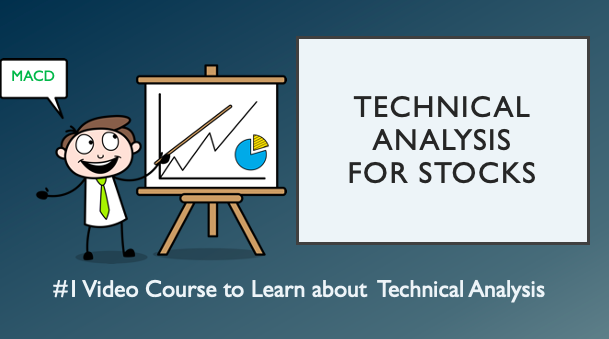Book Summary of The Dark Side of Valuation
by Aswath Damodaran

What is this book about?
"The Dark Side of Valuation" by Aswath Damodaran delves into the complexities of valuing companies in the technology and new economy sectors, particularly those with unconventional financials such as limited revenues or significant operating losses. The book explores how traditional valuation models, which often rely on stable cash flows and earnings, struggle to accurately assess the value of these companies. Damodaran offers alternative approaches and modifications to these models, emphasizing the importance of understanding the business life cycle and the unique challenges posed by technology firms.
Who should read the book?
This book is particularly useful for finance professionals, equity analysts, investors, and business students who are interested in the valuation of technology companies, startups, and firms within the new economy. It is also valuable for anyone involved in corporate finance, investment banking, or venture capital, where understanding the nuances of valuing high-growth, high-risk companies is essential.
10 Big Ideas from the Book:
-
Traditional Valuation Models Limitations: Traditional models like discounted cash flow (DCF) and price-earnings ratios often fall short when applied to technology firms with volatile earnings and unconventional business models.
-
Life Cycle Framework: Valuation should be approached through the lens of a company's life cycle, from startup to decline, as the valuation methods and metrics change at each stage.
-
High Growth vs. Established Firms: High growth firms often have negative cash flows and high potential, requiring more sophisticated valuation techniques that account for future growth rather than current earnings.
-
Intangible Assets: Technology firms derive much of their value from intangible assets, such as intellectual property, which complicates valuation.
-
Risk Assessment: The unique risks associated with new technology firms, including market acceptance and competitive threats, need to be factored into the valuation process.
-
Revenue and Earnings Volatility: For tech companies, future revenue and earnings can be highly unpredictable, necessitating scenario analysis and probability-based approaches.
-
Relative Valuation: Comparing a technology firm to its peers can be challenging due to the lack of direct comparables, but it remains a crucial aspect of valuation.
-
The Role of Market Perception: Investor sentiment and market conditions can greatly influence the valuation of tech companies, often leading to significant deviations from intrinsic value.
-
Alternative Metrics: Metrics such as price-to-sales, price-to-book, and value per site visitor are sometimes more appropriate for valuing technology firms.
-
Sustainability of Growth: For technology companies, sustaining high growth rates is difficult, and the transition to stable growth is a critical period for accurate valuation.
Summary of "The Dark Side of Valuation"
"The Dark Side of Valuation" by Aswath Damodaran offers an in-depth exploration of the challenges associated with valuing companies, especially those in the technology and new economy sectors. Traditional valuation methods often fall short when applied to firms with volatile earnings, high growth rates, and unconventional business models. Damodaran addresses these challenges by providing alternative frameworks and adjustments to standard valuation techniques.
Key Insights
-
The Life Cycle of Firms: The book emphasizes the importance of understanding a company's life cycle—startup, growth, maturity, and decline. Each stage requires different valuation approaches.
-
Growth vs. Value: High growth does not always translate into higher value. Growth needs to be accompanied by excess returns to actually create value.
-
Intangible Assets: Technology companies derive significant value from intangible assets like intellectual property, which complicates traditional valuation models.
-
Risk and Uncertainty: Valuing tech firms involves dealing with high levels of uncertainty and risk, making traditional cash flow models less reliable without adjustments.
-
Real Options in Valuation: The book explores the concept of real options, where investments in one area can create opportunities (or options) for future investments. This is particularly relevant for tech firms with innovative business models.
-
Relative Valuation: Damodaran discusses the difficulties of relative valuation for technology companies, given the lack of direct comparables.
-
Market Sentiment: Investor perception plays a significant role in the valuation of tech firms, often leading to valuations that diverge from intrinsic value.
-
Scenario Analysis: Due to the unpredictability of future earnings, scenario analysis becomes crucial in valuing tech firms, allowing for different possible outcomes to be considered.
-
Discounted Cash Flow (DCF) Modifications: The DCF model remains relevant but requires modifications when applied to high-growth firms, especially in estimating cash flows and discount rates.
-
Management's Role: Managers should focus on sustainable growth and long-term value creation rather than short-term earnings manipulation.
Relevant Metrics and Key Concepts
-
Discounted Cash Flow (DCF) Model:
- Significance: A foundational valuation method that calculates the present value of expected future cash flows.
- Modification for Tech Firms: Adjustments to account for higher risk and volatility in earnings, such as using a range of discount rates or scenarios.
-
Price-to-Earnings (P/E) Ratio:
- Significance: A traditional valuation metric comparing a company's current share price to its per-share earnings.
- Limitations: Often unreliable for tech firms with negative or highly volatile earnings.
-
Price-to-Sales (P/S) Ratio:
- Significance: Useful for valuing companies with little or no earnings but high revenue growth.
- Application: More appropriate for early-stage tech firms where earnings are negative but sales are growing rapidly.
-
Real Options:
- Significance: Valuing the potential future investment opportunities created by current investments.
- Application: Particularly important for firms in dynamic industries like technology, where future opportunities are uncertain but potentially valuable.
-
Reinvestment Rate and Return on Capital:
- Significance: Determines the sustainable growth rate of a company.
- Application: Critical for assessing whether a tech firm's growth is creating or destroying value.
-
Cost of Capital:
- Significance: Reflects the riskiness of the cash flows and is used as the discount rate in valuation models.
- Application: Higher for tech firms due to greater uncertainty and risk.
-
Terminal Value:
- Significance: Represents the value of a firm beyond the forecast period in a DCF model.
- Application: Often constitutes a large portion of the total valuation for high-growth firms.
-
Beta and Risk Premiums:
- Significance: Measures the market risk of a stock compared to the market as a whole.
- Application: Adjusted for tech firms to account for higher market volatility and sector-specific risks.
-
Margins and Operating Income Adjustments:
- Significance: Critical for determining the firm's profitability and cash flow generation.
- Application: Adjustments needed for capitalizing R&D and other investments that are expensed under traditional accounting.
-
Scenario and Sensitivity Analysis:
- Significance: Helps in assessing the impact of different assumptions on the valuation outcome.
- Application: Essential for tech firms where future cash flows are highly uncertain.
These insights and concepts help in navigating the complexities of valuing firms in sectors characterized by rapid innovation, high growth, and significant uncertainty.
Which other books are used as reference?
The book references several key works in finance and valuation, including:
- "Valuation: Measuring and Managing the Value of Companies" by McKinsey & Company
- "Investment Valuation" by Aswath Damodaran
- "The Theory of Investment Value" by John Burr Williams
- Various research papers and articles on valuation techniques, particularly those focusing on the challenges of valuing intangible assets and high-growth companies.
Browse Summaries of Top Investing books!
You may also like the below Video Courses



